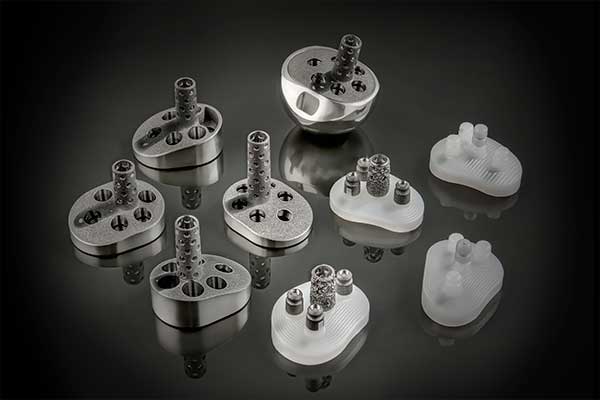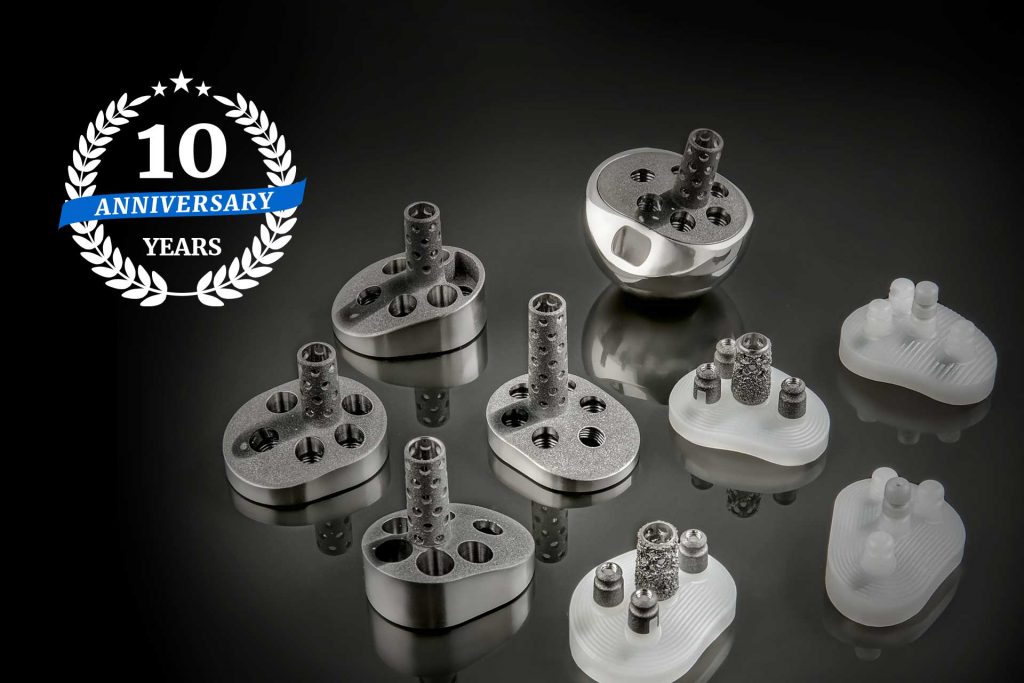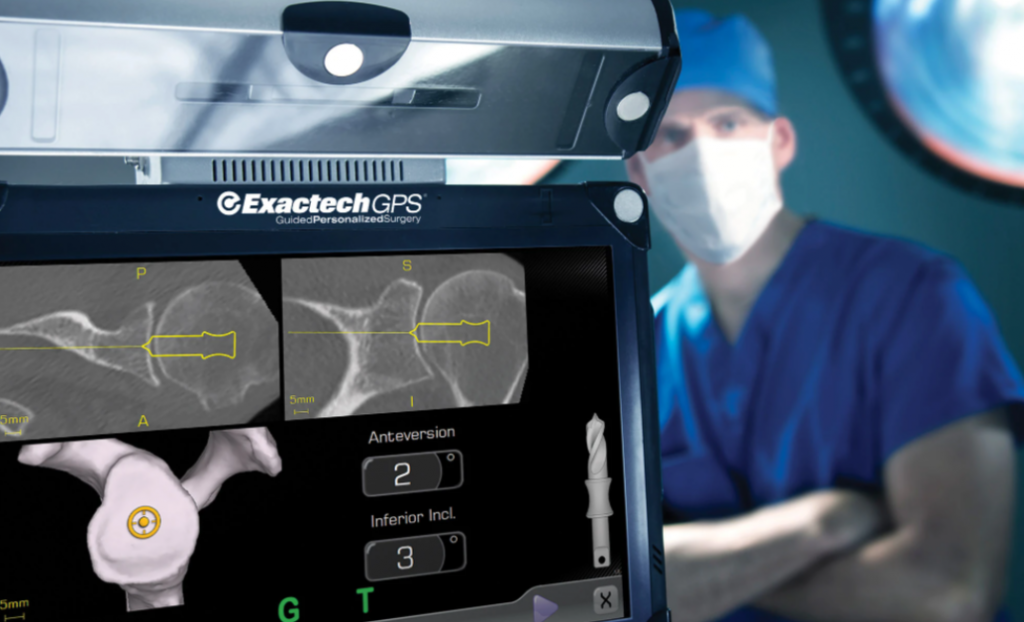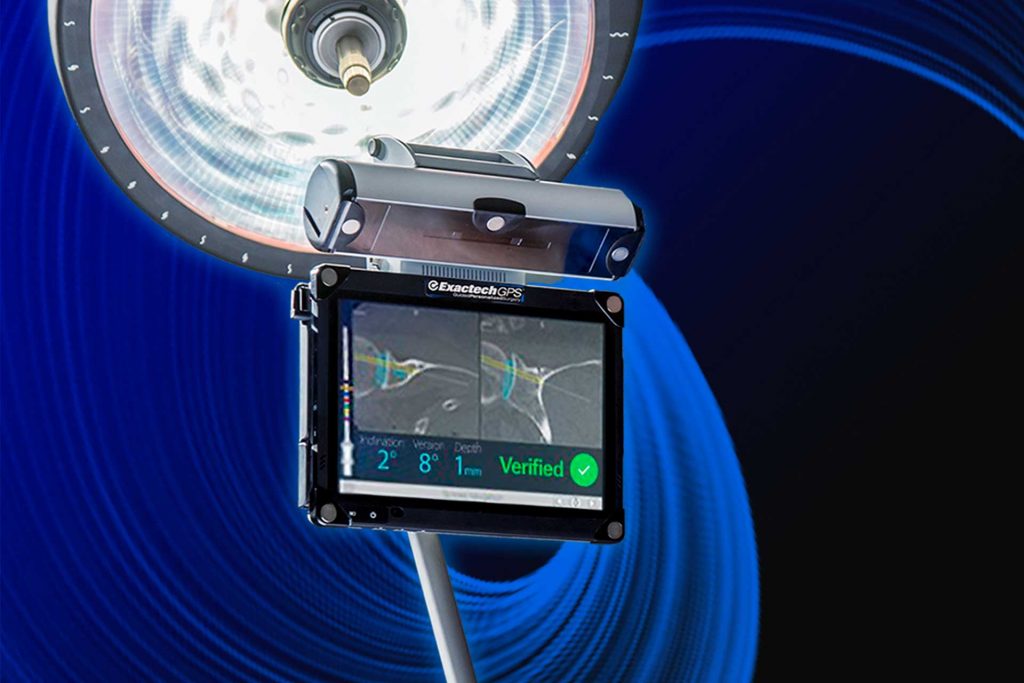
Ten years ago, Exactech introduced the Equinoxe® shoulder system’s augmented reverse baseplate and armed surgeons with a new solution for treating shoulder replacement patients who suffer from severe glenoid deformity. Dozens of studies over the past ten years have demonstrated significant, clinically meaningful improvements in patients’ pain, range of motion and function using these augments. For surgeons, the innovative component provided a new and more bone-conserving way to restore rotator cuff muscle tension and minimize scapular notching, while also achieving glenoid fixation.1-8
As the first company to develop and market this technology, Exactech relied on years of experience in reverse biomechanics to develop augmented baseplates as a component of the Equinoxe® shoulder system. The Equinoxe augmented baseplates offer surgeons a solution for treating severe asymmetric wear and arthritic deformity of the glenoid. The components are designed to preserve bone through off-axis reaming and avoid medializing the joint line by building up the eroded side rather than reaming to correct the deficiency. The baseplates feature an anatomic shape and an innovative bone cage that provides initial and biologic fixation.1-3
...Preoperative planning software combined with ExactechGPS® navigation has been eye opening; I now find I use an augment 90% of the time. Augments restore the joint line, have very predictable outcomes and, with ExactechGPS navigation, save time...
“Since their introduction 10 years ago, the Equinoxe glenoid augments have truly advanced the standard of care,” said Thomas Wright, MD, University of Florida College of Medicine, Gainesville, Fla. “I started using them in 2011 — well before the advent of navigation — because I hated to ream and destroy precious subchondral bone. Preoperative planning software combined with ExactechGPS® navigation has been eye opening; I now find I use an augment 90% of the time. Augments restore the joint line, have very predictable outcomes and, with ExactechGPS navigation, save time. They will always be a main part of my total shoulder arthroplasty practice.”7-12
Since Exactech’s breakthrough innovation, augmented baseplates have become widely used in the shoulder arthroplasty market.
“We are so proud to have been at the forefront of creating and releasing the augmented baseplates. It’s always remarkable to see the impact revolutionary technologies can have on both the industry and the patients they serve,” said Vice President of Extremities Chris Roche.
About Exactech
Exactech is a global medical device company that develops and markets orthopaedic implant devices, related surgical instruments and the Active Intelligence® platform of smart technologies to hospitals and physicians. Headquartered in Gainesville, Fla., Exactech markets its products in the United States, in addition to more than 30 markets in Europe, Latin America, Asia and the Pacific. Visit www.exac.com for more information and connect with us on LinkedIn, VuMedi, YouTube and Instagram.
References
- Roche, C. et al. Achieving fixation in glenoids with superior wear using reverse shoulder arthroplasty. J Shoulder Elbow Surg. Vol. 22(12):1695-701. 2013.
- Friedman, R. et al. The impact of posterior wear on reverse shoulder glenoid fixation. Bull Hosp Jt Dis. Vol. 73: S15-20. 2015.
- Roche, C. et al. Impact of anterior glenoid defects on reverse shoulder glenoid fixation in a composite scapula model. Bull Hosp Jt Dis (2013). 2018 Jun;76(2):116-122.*
- Virk, M. et al. Clinical and Radiographic Outcomes with a Posteriorly Augmented Glenoid For Walch B2, B3, and C Glenoids in Reverse Total Shoulder Arthroplasty. JSES. 2019.
- Liuzza, L. et al. Clinical and Radiographic Outcomes with a Superiorly Augmented Glenoid For Favard E1, E2, and E3 Glenoids in Reverse Total Shoulder Arthroplasty. JBJS. 2020
- Gulotta, L. et al. Clinical Outcomes of Augmented rTSA Glenoid Baseplates. Seminars in Arthroplasty: JSES. 2021 In press.
- Kersten, A. et al. Posterior augmented glenoid designs preserve more bone in biconcave glenoids. J Shoulder Elbow Surg. 2015 Jul;24(7):1135-41.
- Roche, C. et al. Biomechanical impact of posterior glenoid wear on anatomic total shoulder arthroplasty. Bulletin of the Hospital for Joint Diseases 2013;71(Suppl 2):S5-11.
- Gulotta, L. et al. Clinical outcomes of augmented rTSA glenoid baseplates. Presented at ASES 2019 (Nominated for Neer Award).
- Grey, S. et al. Clinical and radiographic outcomes with a posteriorly augmented glenoid for Walch B glenoids in anatomic total shoulder arthroplasty. J Shoulder Elbow Surg. 2020 May;29(5):e185-e195.
- Virk, M. et al. Clinical and radiographic outcomes with a posteriorly augmented glenoid for Walch B2, B3, and C glenoids in reverse total shoulder arthroplasty. J Shoulder Elbow Surg. 2020 May;29(5):e196-e204.
- Wang, A. et al. Computer navigation of the glenoid component in reverse total shoulder arthroplasty: a clinical trial to evaluate the learning curve. J Shoulder Elbow Surg. 2020 Mar;29(3):617-623.
*In vitro (bench) test results or laboratory testing may not necessarily be predictive of clinical performance.
Media contact
Priscilla Bennett
Vice President, Corporate Marketing & Communication
352-377-1140










